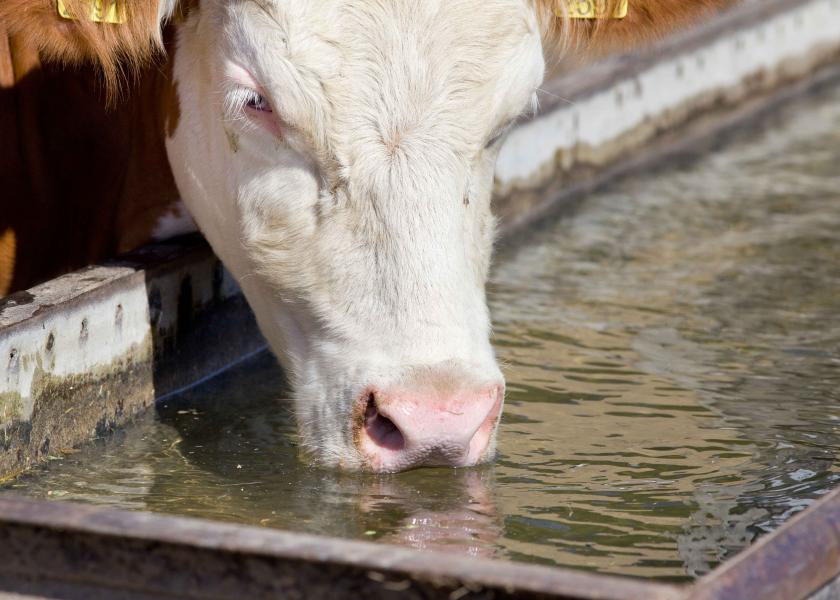Starting Stockers: 101

A one-size-fits-all approach to managing stocker cattle at arrival is easier said than done. Yet remembering two animal husbandry basics go a long way in getting stockers through that critical acclimation period.
According to Dr. Douglas Hilbig, a consulting veterinarian with Oklahoma Beef Consultants, nutrition and water are key tools for feedlot operators and backgrounders when starting cattle. He says simple diets — including good-quality, long-stem grass hay with starter ration — often work best for the first 21 to 30 days.
“The faster we push them up front, the harder time we have getting those cattle to start,” Hilbig explains. “We need to remember the first 30 days we’re trying to teach them to eat. We want it to be nutritious, but we really don’t need a lot of excess calories in the feed yet.”
While providing water to newly arrived stocker cattle is a given, Hilbig says making sure it’s fresh and clean is also crucial because most cattle have never drunk from water tanks or automatic waterers.
“Cattle understand the sound of water, and they know the smell of water,” Hilbig says. He adds that filling water sources while cattle are coming into a pen can be helpful in getting them to drink.
Beyond the Bunk
While getting newly arrived stocker cattle acclimated to their new environment starts with feed and water, the strategy doesn’t end there.
Hilbig says keeping cattle comfortable and rested is vital for the first 24 to 48 hours after arrival. “Anything that makes the cattle more comfortable and can reduce stress, the better off we are,” he says.
Another critical step in getting newly arrived stockers acclimated is to avoid commingling with other cattle.
“Once you get a group of cattle in, try not to add on any other cattle for 30 days,” Hilbig says.
Then, it’s time to focus on developing a health regimen.
“We try not to overuse antibiotics, but we also need to discover or understand what our limitations are weather-wise or with current health and labor situations,” Hilbig says.
Mass treatment with antibiotics on arrival can sometimes be used, he adds, but in those instances the protocol is about helping troubleshoot weather, labor and health situations that are unavoidable.
Sudden, dramatic changes — in either weather or nutrition — can prompt a negative outcome in the cattle, Hilbig says.
“If it’s the weather, we just have to anticipate we’re going to have some issues,” he says. “So, whenever we are about to see weather changes, we don’t want to make any major feed changes in either ingredients or in amount being fed.”
Hilbig points out that stocker cattle are not a single source animal. Thus, understanding that they represent multiple locations and backgrounds is key.
“We need to treat the whole to the least common denominator and catch everybody up,” Hilbig explains. “If we can do that, we can keep cattle healthy and wanting to eat and drink.”







